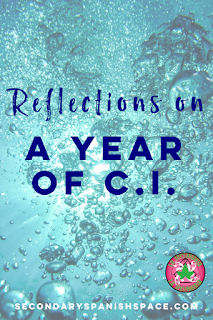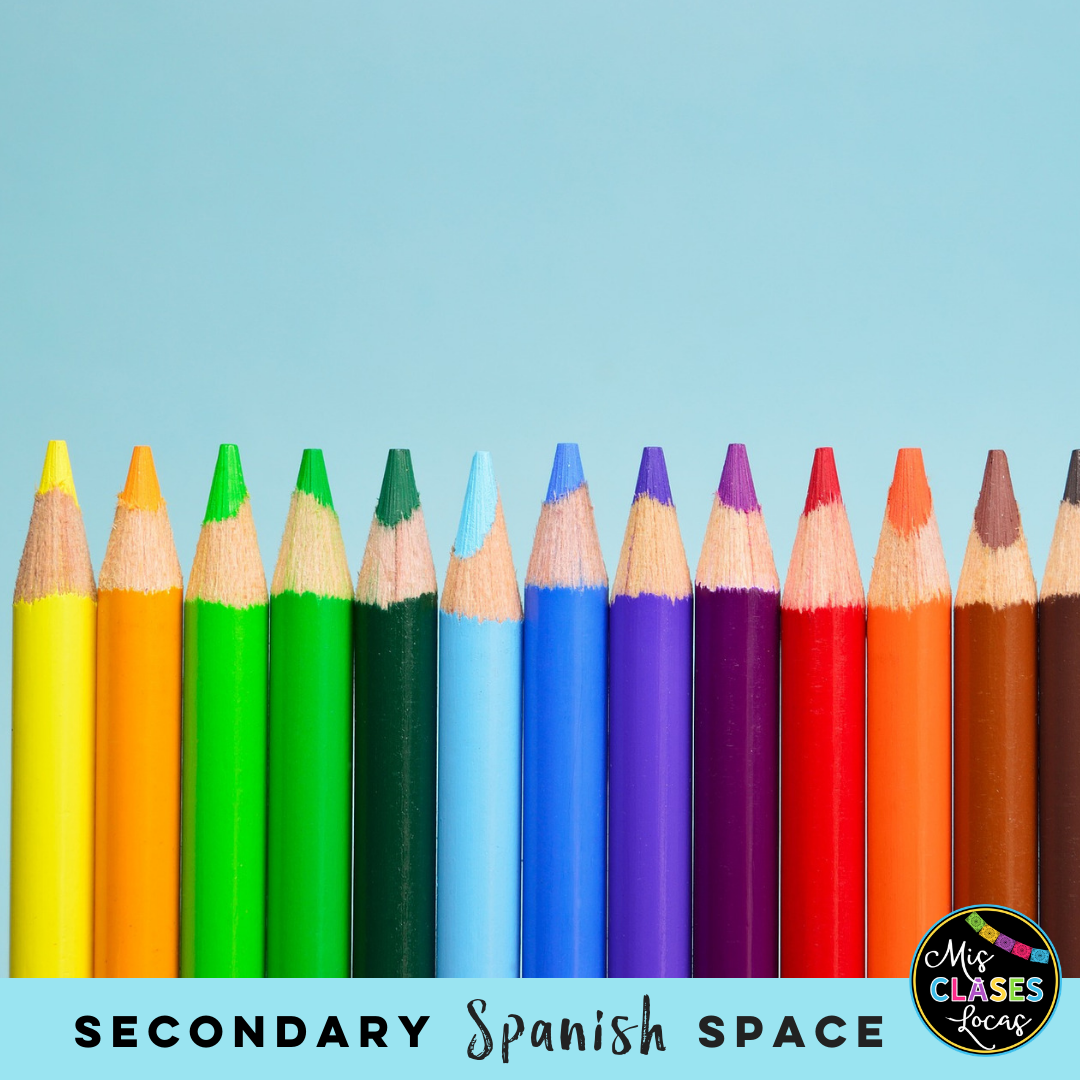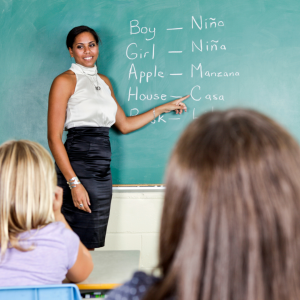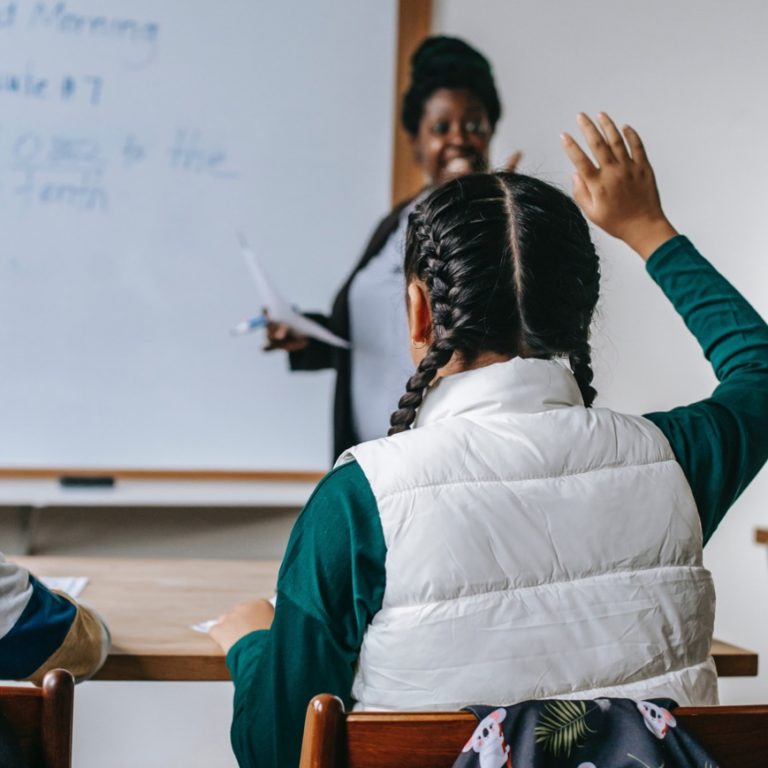Reflections on a year of Comprehensible Input
December 3, 2019
By Jade Collins
Last year was my first time “diving into” the Comprehensible Input (CI) method. I’d previously seen posts and heard feedback from other Spanish teachers about how CI teaching was changing their classroom. The thing that stuck out to me the most was the student growth! Seeing what students were able to produce by being instructed with Comprehensible Input was very impressive.
There is one very important thing that I can say after my reflection of my first year with CI. There is no one size fit all for comprehensible input. There are so many ways to meet the needs of your students. I had to try many different methods to find methods that fit the needs of my students.
It takes practice and time to figure out what works best for your students. It could even take time to figure out what works best with each set of students. My first semester and second semester students were total opposites in what they liked, how they learned, and what they needed from me to succeed. It was frustrating for me to realize that what I thought I had a good handle of wasn’t right for that group.
And guess what…that’s ok. We are forever learning and forever students (Cheesy…I know!) But it’s true. Teaching is about learning. I’m learning and working to get better at CI and the correct blend of strategies that works well for each group.
Depending on how much freedom in the curriculum you have you can tailor your methods for CI with your students!
Techniques that were important in my CI classroom
Free voluntary reading (FVR)
LISTEN! Free voluntary reading is amazing for students learning a language. The students get to choose the book they read and acquire so many new vocabulary words from a book they are interested in. My students know more vocabulary and grammar from reading on their own and they learn how to interpret what they are reading after they’ve used the glossaries a bit. It amazing to see how confident they are after understanding what they are reading COMPLETELY in Spanish
Use of LOTS of visuals
Visuals were SOOO helpful. If you’re not a big acting/movement person, then having visuals is important to help students make connections to the message you are trying to communicate.
Repetition
Repeating phrases and sentences was essential for my students to understand in Spanish. Speak. Very. Slowly. Giving them time to process what they were hearing in Spanish helped them be more confident in their interpretations.
Story-telling and reading comprehension passages
This is one of my favorites. After practicing, I got skilled at telling stories on the spot. Sometimes the stories were silly, serious, or about students or famous people. Some of the stories were in written form for reading comprehension practice (check out one of my reading comprehension passages to get an idea). I used things that I thought they could relate to in order to catch their attention. A story can be completely ridiculous and still have target structures and vocabulary being used in a unit. The goal is for students to understand what they are hearing.
Games
LOVE using games, like Elisabeth’s Review Games You Can Prep in a Snap. I structure my games so that students mostly stay in the target language because they need it to advance in their games. It can help with vocabulary building and sentence building. There are many games that help get students talking, reading, and writing in the target language. A couple games that my students absolutely love are ¡SEIS! and Matamoscas! I love them because they keep me in the target language and it provides my students with the input they need.
Strategies that I’ve seen and still want to try
Movie Talks
This technique is very interesting. The teacher uses a clip no longer than five minutes. As the movie clip starts, teachers will pause the movie clip and begin to describe what is happening in the target language. Many teachers use it to reinforce structures currently being used in class. Repeat giving descriptions of scenes of the paused movie clip until the end. THEN, play the movie clip with sound and without pausing. Not sure what movie to show? I love this list of Movies to Show in Spanish Class.
Running Dictation
This activity seems like a great way to get students moving and excited about learning. Students work in pairs to read, memorize, and share what they have read with their partners. Andddd it’s a race and that makes any game more fun. 🙂 To learn more, Allison covers how she uses Running Dictation in Spanish Class on her blog Mis Clases Locas.
Picture Talk
Picture Talk is an opportunity for teachers to load students with TONS of input in the target language. You describe a picture being displayed in Spanish based on vocabulary learned or new vocabulary that you want to introduce to students. The beauty of the activity is that is it so versatile. It could be a review of old vocabulary or structures and completely new vocabulary and verb structures. Using the picture to help communicate a message to students is genius and I’m sure loads of fun!
Group Reading
I love using FVR. It’s a great way to get students more interested in reading and reading in the target language. If you have 2-3 of the same books, give students the task to read and discuss together with guided questions.
Creative Writing Activities
Writing in another language seems like the hardest task for my students. I want to make writing into more of a game to lower the pressure of writing in a different language. One activity I’d love to try is Roll and Write, Timed Write, and Free Write to give students a chance to let their imaginations do all the work. For more ideas, Sherry has shared a bunch of Ways to Improve Students’ Spanish Writing on the SSS blog.
To sum up
It takes time to figure out what works for you and your students. Just don’t think you have to imitate what someone else does. They have different students. A different teacher. Different relationships. Different school environment.
Also, there is so much information available to help guide you during your journey to using comprehensible input methods with your students. I’m going to continue to blog about strategies I use and new strategies that I find. Follow me on my CI journey at www.lasecundaria.org to connect with me.
Hasta pronto,
Jade 🙂
About the author:
Jade Collins has experience teaching all levels of high school Spanish, including IB with a diverse student population. This year, as she takes on a new position at a middle college, she is embracing teaching with comprehensible input. To see how it goes, follow Jade’s journey on her new blog, La secundaria.











1 Comment
I love your article, as it is filled with great ideas to use in the CI classroom. I've spent time researching CI and am incorporating more of it into my classes this year. I wrote a blog article about my journey toward CI that you may interest you. You can access it here: enlanguages.com/454/taking-the-dive-into-ci/